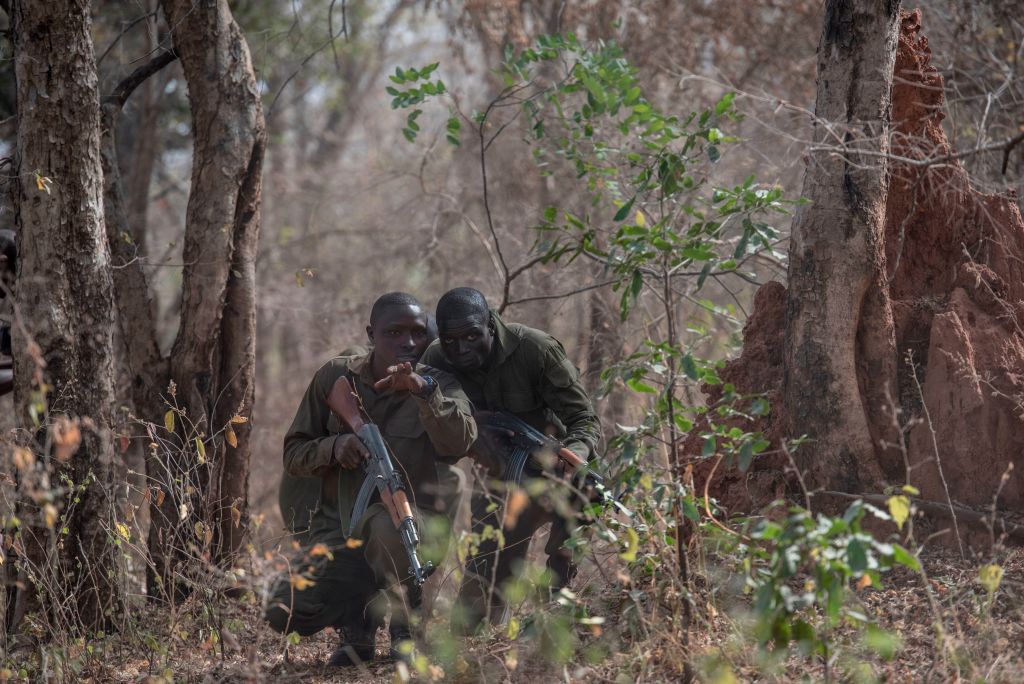ADF STAFF
Three vast, connected national parks in West Africa — the W, Arly and Pendjari — are known as the WAP Complex. They also have become known for terrorist groups and transnational crime.
Stretching for 34,000 square kilometers across the borders of Benin, Burkina Faso and Niger, the WAP is full of dense forests, marshy wetlands and savannas where large populations of wildlife abound. But a lack of government presence, a dearth of security forces and the three countries’ porous borders have given easy access to criminal networks involved in the smuggling and trafficking of drugs and weapons.
Sahel-based terrorist groups linked to the Islamic State and al-Qaida, such as Jama’at Nusrat al-Islam wal-Muslimin (JNIM), also have established hideouts from which they launch attacks in all three bordering countries.
“JNIM violence and activity in the tri-border area between Burkina Faso, Niger and Benin have been escalating for some time, but since the beginning of the year, insecurity has risen considerably,” security risk analyst Charlie Werb wrote in a March 20 post on X. “Recent attacks indicate that the situation may deteriorate further.”
In March, JNIM reportedly launched attacks with mortars and explosive drones in the tri-border area outside of the WAP, as Werb said the militant group “appears to be testing some of its newfound capabilities.”
He described the parks complex as having “massively exacerbating” security gaps and being “almost impossible to secure and monitor. … The relative freedom JNIM enjoys in the park means it can transport weapons, personnel and equipment between the three countries with relative ease.”
The WAP has been an important part of lucrative trade and smuggling routes for decades. Fidel Amakye Owusu, an analyst at the Conflict Research Consortium for Africa, told the South Africa-based Institute for Security Studies that local criminal network uses motorcycles and animals to move large stocks of weapons along paths through the parks.
“Using their knowledge of the region’s rough terrain, current and former militants, professional transporters and corrupted security force members buy, sell and transport firearms,” institute researcher Feyi Ogunade wrote in a March 4 article.
Although there are clear links between criminal groups, terrorist groups and arms traffickers, regional initiatives to counter the flow of weapons are limited in the WAP Complex, Ogunade said.
“Regional and international actors have focused on security-centric responses with little success,” he wrote. “There is no doubt that strengthening regional cooperation, intelligence sharing, border patrols and targeted search missions would reduce the illicit arms flow in the WAP. But security responses should form part of a broader intervention targeting both supply and demand drivers of illicit arms.”
Beninese Soldiers frequently coordinate their patrols in the W with park rangers who know the landscape and how to deal with wildlife. According to a researcher with experience in northern Benin, a deadly JNIM attack in July 2024 was the result of a surprise attack on a shared campsite.
“It was a military position that was inside the park in northeast W, which was used to track movements,” said the researcher, who spoke to environmental media organization Mongabay on the condition of anonymity. “The army has created a bunch of them in the parks where they have these little locations where they try to see what’s happening, and this position simply got overwhelmed by jihadists. It was just taken over. So, it wasn’t IEDs, it was a gunfight, and one that was pretty unbalanced.”
Werb expects that more militant attacks in the tri-border subregion ultimately will pose an increasing threat to nearby coastal countries in West Africa, such as Togo and Ghana.
“JNIM’s actions so far this year suggest that we may see violence escalate significantly in this corner of the region over the coming months,” he wrote. “This will allow it to continue posing threats to parts of Burkina Faso and Niger, but also further its expansion in Benin.”

